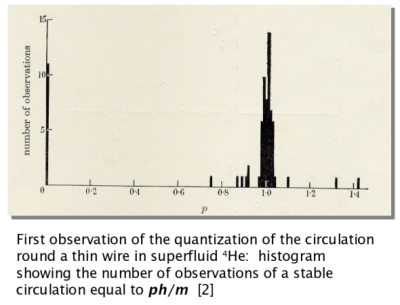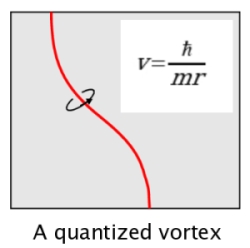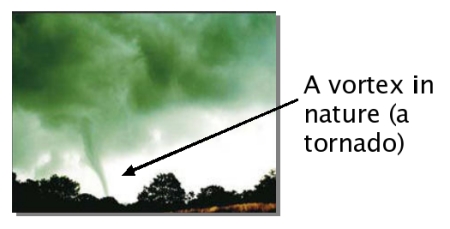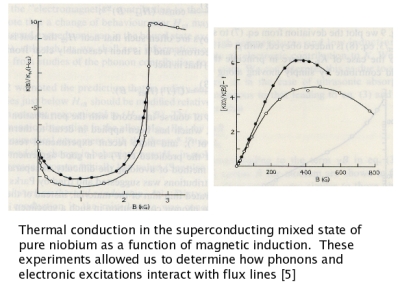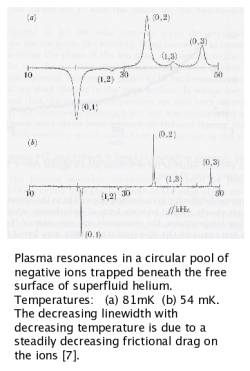Research Overview#
William Vinen
Joe Vinen received his undergraduate and graduate education in Cambridge, where he also taught for several years. He was appointed to a Chair of Physics in Birmingham in 1962, where he led the Condensed Matter Group for many years. He was appointed to the Poynting Chair in 1973, and he served as Head of Department from 1973 until 1981. He formally retired, and was appointed Honorary Senior Research Fellow, in 1997, but he has maintained his interest in research. He took a strong interest in teaching at a national level; he chaired the Education Committees of both the Royal Society and the Institute of Physics, and he played a major role in the establishment of the four-year MPhys (or MSci) courses. His national and international work has included the Chairmanship of the Physics Committee of the Science and Engineering Research Council, of the Commission for Low Temperature Physics of IUPAP, of the Standing Conference of Professors of Physics, and of the Physics Panel for the 1996 Research Assessment Exercise.
Much of his research has centred on superfluids and superconductors. With Henry Hall, now Emeritus Professor in Manchester, he made the experimental discovery of quantization of vortex motion in superfluid helium [1], and his subsequent observation in a macroscopic mechanical experiment of single quanta of hydrodynamic circulation was the first direct demonstration of a macroscopic quantum effect in a superfluid system [2]. Using both experiments and theoretical analysis, Joe explored the crucial role played by quantized vortices in any rotational motion in a superfluid, and in this way he was able to account for many aspects of superfluid behaviour that had previously been a mystery, including the nucleation of vorticity [3].
The quantized flux line is the analogue in a superconductor of a quantized vortex in liquid helium, and an array of flux lines allows a magnetic field to penetrate into the bulk of a type II superconductor. For some years in Birmingham, Joe explored (with Nozières, Muirhead, Forgan, Gough, Warren and Hood) the properties of such flux lines, focussing on their dynamical behaviour as seen in the Hall effect in a type II superconductor and on their role in thermal conduction and ultrasonic attenuation [4],[5].
An interest in the way liquid helium makes a transition from normal fluidity to superfluidity in the immediate neighbourhood of the superfluid phase transition led Joe (with Vaughan, Pike, Palin and Hurd) to develop the techniques of very high resolution spectroscopy to explore fluctuations that are characteristic of this transition [6].
Various charged particles can be trapped close to the free surface of liquid (especially superfluid) helium, and this makes possible the study of two-dimensional assemblies of charged particles on a substrate that is practically free from friction. With Barenghi, Muirhead, Mellor, Skrbek, Palin, Meredith (née Traverse), Sommerfeld, Cox, Levchenko, Pakes & Elliott, Joe studied for the first time both the plasma physics of such assemblies and the transition to states of crystalline order [7],[8],[9].
Since his formal retirement Joe has returned to a topic relating to quantized vortices in the superfluid phases of both the common isotope of helium (4He) and the rare isotope (3He), namely Quantum Turbulence or the study of turbulence in a superfluid. He contributed to an upsurge of interest in this subject, at an international level, on the part of both low temperature physicists and those mathematicians and engineers interested in classical turbulence 10-13. The resulting interdisciplinary effort, in which Joe has played a leading role, has addressed questions relating to the effect of quantization on classical turbulent fluid motion and to the characteristics of turbulence in a fluid that has no viscosity. The work has led much national and international collaboration, involving the universities of Lancaster, Manchester and Newcastle in the UK, together with groups in Finland, Japan, the Czech Republic, and the USA. The work combines the challenges that we meet in trying to understand phenomena in classical turbulence (many of enormous practical importance) with those associated with quantum phenomena characteristic of low-temperature condensed matter.
[1] H E Hall & W F Vinen, The rotation of liquid helium II, Proc. Roy. Soc., A238, 204, 215 (1956).
[2] W F Vinen, The detection of single quanta of circulation in liquid helium II, Proc. Roy. Soc., A260, 218 (1961).
[3] C M Muirhead, W F Vinen & R J Donnelly, The nucleation of vorticity by ions in superfluid 4He, Phil. Trans. Roy. Soc., A311, 433 (1984).
[4] P Nozières & W F Vinen, The motion of flux lines in type 2 superconductors, Phil. Mag., 14, 667 (1966).
[5] W F Vinen, E M Forgan, C E Gough & M J Hood, Ultrasonic absorption and thermal conduction in the mixed state of type-II superconductors, Physica, 55, 94 (1971).
[6] W F Vinen & D L Hurd, Light scattering studies of the dynamical behaviour of liquid 4He close to the ?-line, Adv. Phys. 27, 533 (1978).
[7] C F Barenghi, C J Mellor, J Meredith, C M Muirhead, P K H Sommerfeld, Ions trapped below the surface of superfluid helium: the observation of plasma resonances and the measurements of effective masses and ionic mobilities. Phil. Trans. Roy. Soc., A334, 139 (1991).
[8] P L Elliott, C I Pakes & L Skrbek, Novel Edge Magnetoplasmons in a Two- Dimensional Sheet of 4He+ Ions, Phys. Rev. Lett., 75, 3713 (1995).
[9] P L Elliott, C I Pakes, L Skrbek & W F Vinen, Capillary wave crystallography crystallization of two-dimensional sheets of He+ Ions, Phys. Rev. B61, 1396 (2000).
[10] W F Vinen, Classical character of turbulence in a quantum liquid, Phys. Rev, B61, 1410 (2000).
[11] W F Vinen & J J Niemela, Quantum turbulence, J. Low Temp. Phys., 128, 167 (2002)
[12] W F Vinen, M Tsubota & A Mitani, Kelvin-wave cascade on a vortex in superfluid 4He at very low temperatures, Phys. Rev. Lett., 91, 135301 (2003).
[13] W F Vinen, An Introduction to Quantum Turbulence, J. Low Temp. Phys., 145, 7 (2006).
Any further pages in alphabetic order of their title as created by you.
#
Just click at "Create new page", then type a short title and click OK, then add information on the empty page presented to you (including maybe a picture from your harddisk or a pdf-file by using the "Upload" Button) and finally click at "Save".
...no Data available yet!


